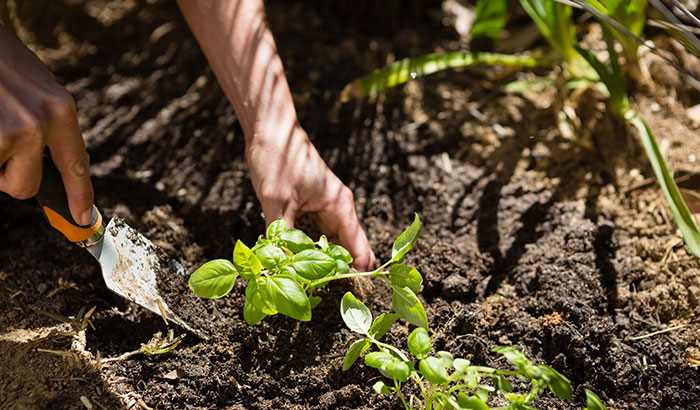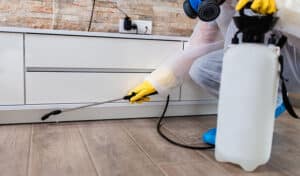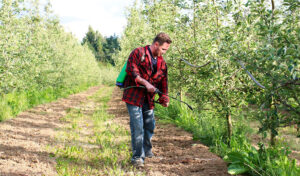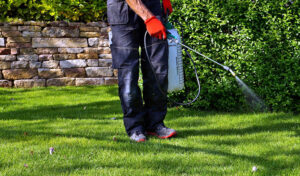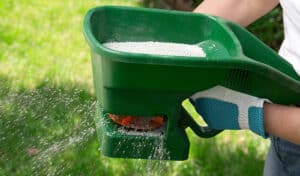Healthy plants don’t happen by accident, but with a little patience and the right practices, you can help your garden grow better and flourish.
We all know the basics of a healthy garden- soil, water, and sunlight- but what do you do when your plants still won’t develop properly? Whether your goal is to grow beautiful cut flowers, have fresh herbs for cooking, or create a mini-farm full of fruits and vegetables, there are plenty of ways to make your garden more productive.
Stay tuned as we share our best tips and tricks for cultivating a flourishing garden this growing season.
Nourish Your Soil
The key to any thriving garden starts with the soil. Plants need healthy soil that is rich in nutrients to grow. Invest in soil that is both nutrient-rich and well-drained so that it can effectively retain water. Plants with a healthy foundation will be far more productive during their life cycle and need less care.
For healthier soil, implement the following tips:
- Test your soil – A soil test will help you learn more about the level of life in your soil and what its texture is like. Testing your soil will also alert you to any deficiencies or pH problems.
- Add organic matter – Whether your soil is rocky, clay-like, sandy, compacted, or otherwise unhealthy, increasing the amount of organic matter is one of the best ways to improve it. Organic matter includes substances such as compost, lawn clippings, shredded leaves, aged manure, and coffee grounds.
- Adjust the pH – If your soil test reveals a pH imbalance, adjust its acidity level with limestone, bone meal, compost, or wood ash.
- Avoid soil compaction – If your garden beds are a hot spot for wheelbarrows, soaring soccer balls, or children’s feet, it’s time to raise your garden beds. Soil compaction makes it much more difficult for plants to thrive.
- Leave it alone – The more you disrupt the soil, the worse it will become. Digging or tilling disrupts the ecosystem that makes healthy, nutrient-rich soil possible.
Choose the Right Plants for the Location
As much as gardeners would like to be able to grow any plant of their dreams, you must choose varieties that have been bred or have evolved to thrive in your particular climate. Growing what naturally thrives in your soil and environment will result in more bountiful harvests. Know your climate zone and take note of the sun positioning in your yard when selecting plants.
Build Dedicated, Raised Beds
If you have poor soil or drainage issues, raised beds are here to save the day. Some of the benefits of raised garden beds include:
- Fewer weed problems
- Better water retention and drainage
- More growing space
- Less soil erosion
- No soil compaction
The best materials for raised beds are cedar, pine, or redwood. Fill your completed beds with compost, topsoil, and some sort of grit to help with drainage.
Space Plants Correctly
The spacing of your plants can make all the difference in how well they grow. Overcrowded plants grow poorly and are prone to disease, but plants spaced too far apart won’t reach their full production potential. We recommend spacing your crops three feet apart from the center root. This ensures enough room to grow upwards and produce a prosperous yield.
Feed Your Plants
Many struggling plants could benefit from a boost of organic fertilizer. Plants demand a steady supply of moisture, sunlight, and nutrients to survive, and feeding plays a crucial role in obtaining these nutrients. As the soil becomes depleted, you need to add fertilizer to replace the lost nutrients. Plants that are properly fed develop stronger roots and become more beautiful and robust over time.
Use Wise Water Practices
Vegetation needs a consistent supply of moisture to grow quickly, but this doesn’t mean you need to soak your plants every minute of the day. Striking the balance of watering your plants appropriately is vital.
Instead of soaking your greenery throughout the day, two times is most effective for optimal hydration. A slight drying out before watering might seem troublesome, but it will enhance and strengthen root growth. Be sure to give your plants a thorough drink as you spray them each morning and evening. If you live in an area with serious drought conditions, you might want to consider choosing plants that don’t need much water to survive.
The best way to tell if plants need watering is to feel the soil. Push a finger about an inch down into the soil, and if it’s dry, it’s time to water.
Plant for Pollinators
Pollinators play an essential role in a thriving garden. Although bees and other pollinators might seem like a nuisance as you’re trying to water and care for your plants, they are essential for your garden to thrive. Flowers, trees, and fruits that are frequently visited by bees will produce larger and more uniform results than those less visited.
If you want to prioritize plant pollination, here are a few ways to attract more pollinators to your garden:
- Plant bee-friendly plants including rosemary, poppies, clovers, milkweed, zinnias, sedum, wild geranium, and marigolds
- Don’t use pesticides that deter pollinators
- Grow local native plants instead of exotic ones
- Plant several colors of plants and flowers
- Choose a variety of flower shapes and types
- Plant similar flowers together and in clumps
- Include an array of plants that flower all season long
- Select a space for your garden that sees ample sunlight and will be sheltered from strong winds
- Install a reliable water source such as a garden pond or a water feature
Let Summit Lawn & Pest Control Help
If you want to help your garden grow better this summer, receive expert help with Summit Lawn & Pest Control. We offer premium lawn care and pest control services to get your yard in pristine shape despite the weather or time of year.
We serve several cities in Utah County, Utah, including Lehi, Alpine, Orem, Provo, Spanish Fork, and more! Contact us today for your free estimate.


